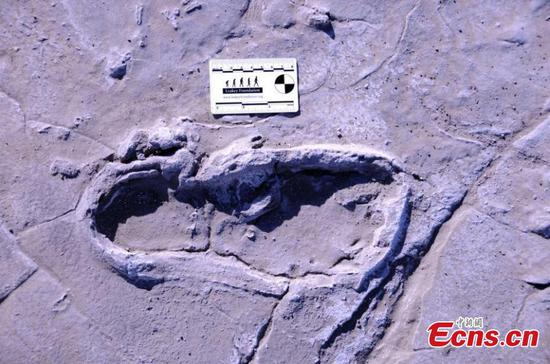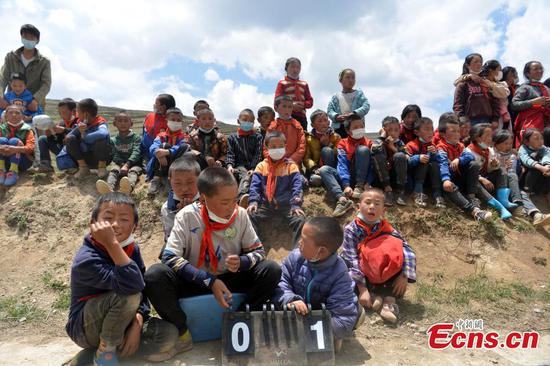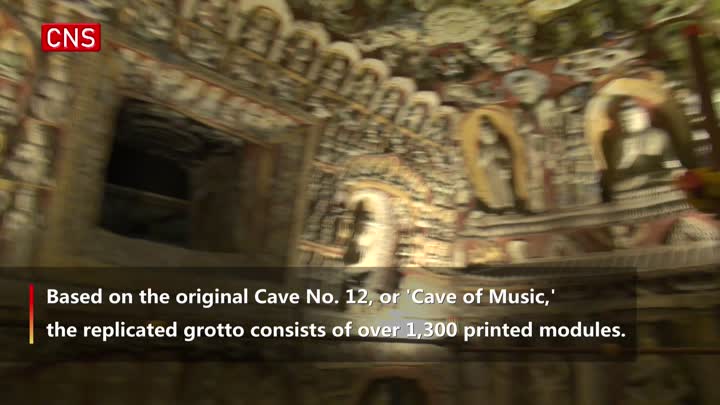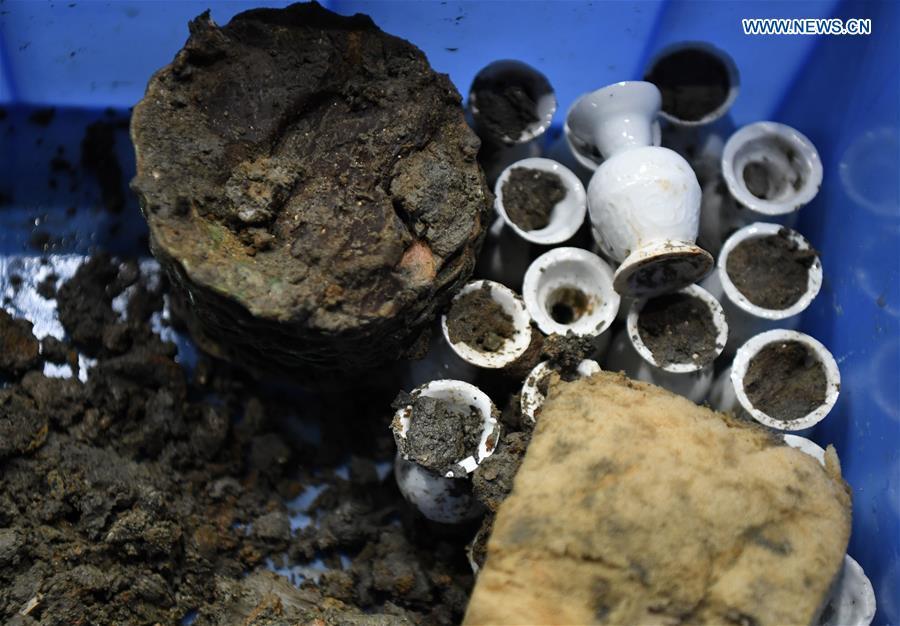
Photo taken on May 12, 2020 shows porcelain products found on the shipwreck of Nanhai No. 1 in Yangjiang, south China's Guangdong Province. The excavation of the Nanhai No. 1, a shipwreck dating back to the Song Dynasty (960 A.D.-1279 A.D.), has entered the final stage and is expected to conclude in 2021, according to the excavation team. The excavation the ancient shipwreck was listed by China in its top 10 archaeological discoveries for 2019. (Xinhua/Deng Hua)
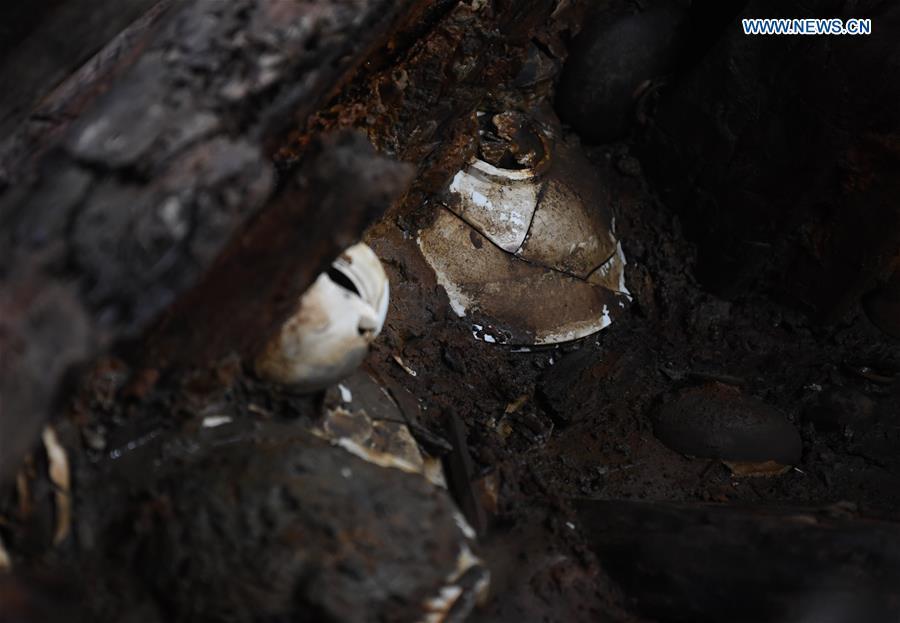
Photo taken on May 12, 2020 shows porcelain pieces found on the shipwreck of Nanhai No. 1 in Yangjiang, south China's Guangdong Province. The excavation of the Nanhai No. 1, a shipwreck dating back to the Song Dynasty (960 A.D.-1279 A.D.), has entered the final stage and is expected to conclude in 2021, according to the excavation team. The excavation the ancient shipwreck was listed by China in its top 10 archaeological discoveries for 2019. (Xinhua/Deng Hua)
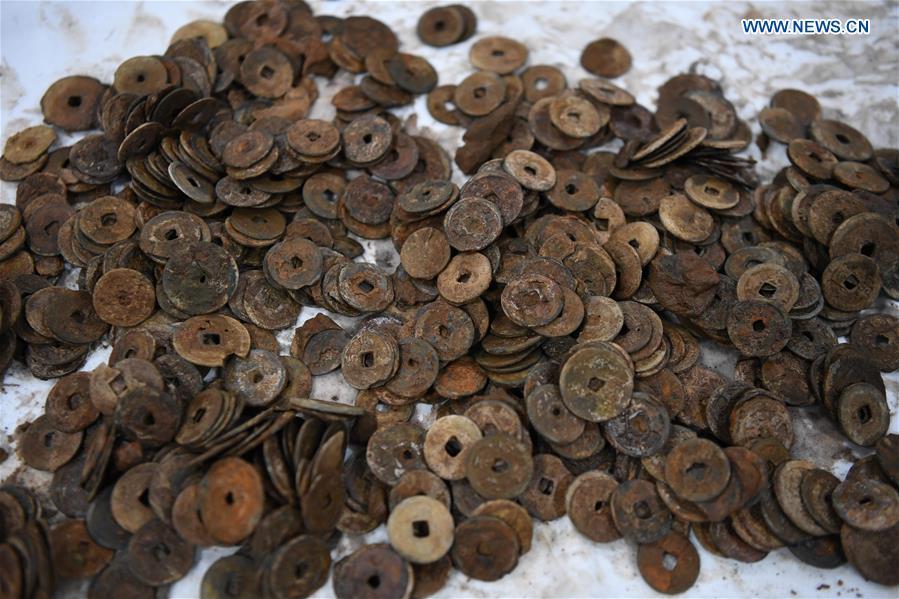
Photo taken on May 12, 2020 shows ancient coins found on the shipwreck of Nanhai No. 1 in Yangjiang, south China's Guangdong Province. The excavation of the Nanhai No. 1, a shipwreck dating back to the Song Dynasty (960 A.D.-1279 A.D.), has entered the final stage and is expected to conclude in 2021, according to the excavation team. The excavation the ancient shipwreck was listed by China in its top 10 archaeological discoveries for 2019. (Xinhua/Deng Hua)
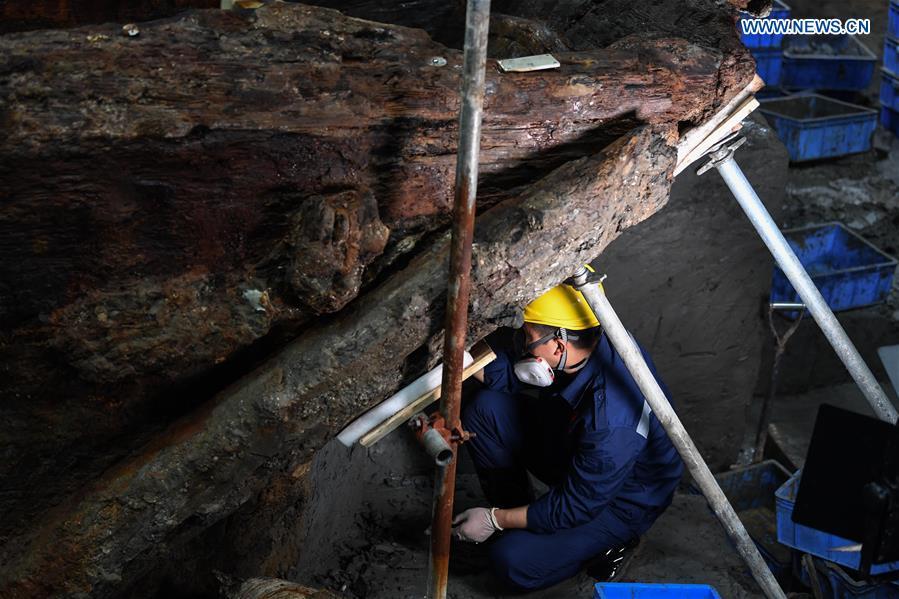
A staff member works at the excavation site of the shipwreck of Nanhai No. 1 in Yangjiang, south China's Guangdong Province, May 12, 2020. The excavation of the Nanhai No. 1, a shipwreck dating back to the Song Dynasty (960 A.D.-1279 A.D.), has entered the final stage and is expected to conclude in 2021, according to the excavation team. The excavation the ancient shipwreck was listed by China in its top 10 archaeological discoveries for 2019. (Xinhua/Deng Hua)
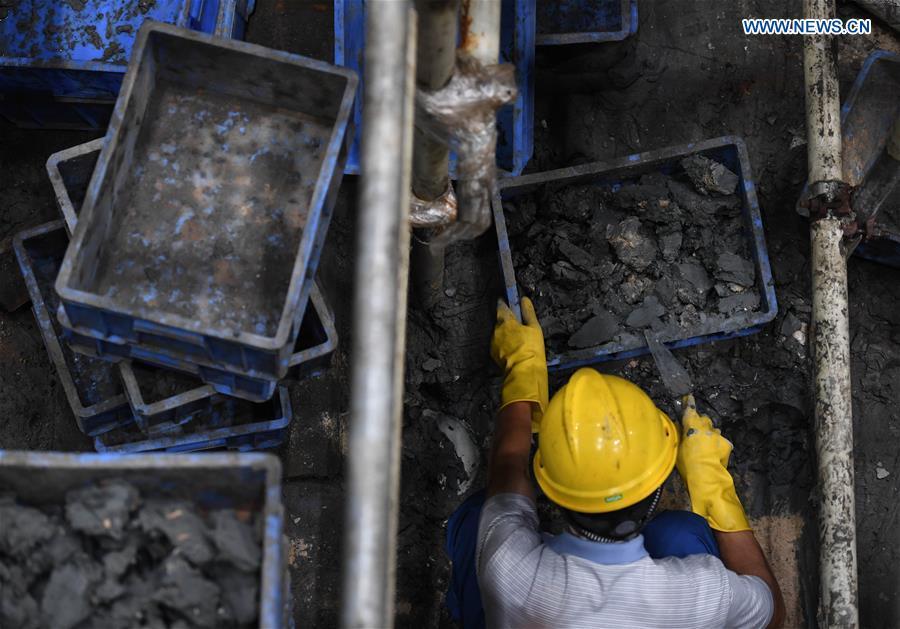
A staff member works at the excavation site of the shipwreck of Nanhai No. 1 in Yangjiang, south China's Guangdong Province, May 12, 2020. The excavation of the Nanhai No. 1, a shipwreck dating back to the Song Dynasty (960 A.D.-1279 A.D.), has entered the final stage and is expected to conclude in 2021, according to the excavation team. The excavation the ancient shipwreck was listed by China in its top 10 archaeological discoveries for 2019. (Xinhua/Deng Hua)
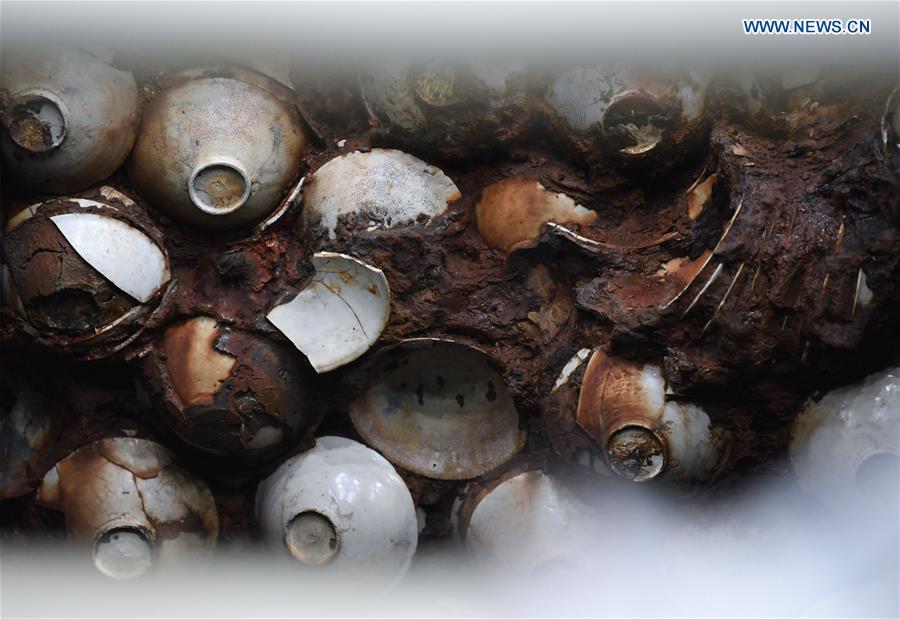
Photo taken on May 12, 2020 shows porcelain products found on the shipwreck of Nanhai No. 1 in Yangjiang, south China's Guangdong Province. The excavation of the Nanhai No. 1, a shipwreck dating back to the Song Dynasty (960 A.D.-1279 A.D.), has entered the final stage and is expected to conclude in 2021, according to the excavation team. The excavation the ancient shipwreck was listed by China in its top 10 archaeological discoveries for 2019. (Xinhua/Deng Hua)
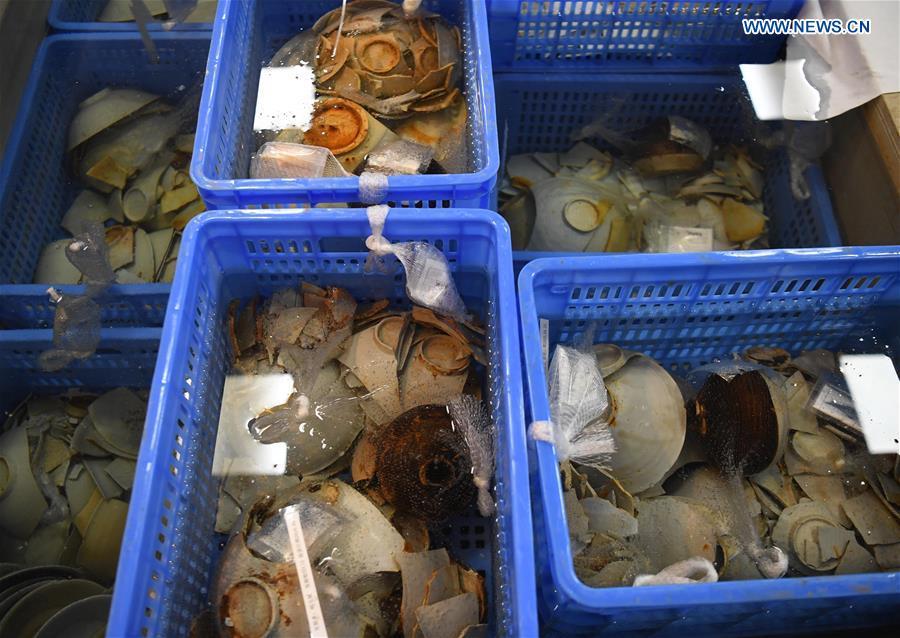
Photo taken on May 12, 2020 shows porcelain pieces found on the shipwreck of Nanhai No. 1 in Yangjiang, south China's Guangdong Province. The excavation of the Nanhai No. 1, a shipwreck dating back to the Song Dynasty (960 A.D.-1279 A.D.), has entered the final stage and is expected to conclude in 2021, according to the excavation team. The excavation the ancient shipwreck was listed by China in its top 10 archaeological discoveries for 2019. (Xinhua/Deng Hua)
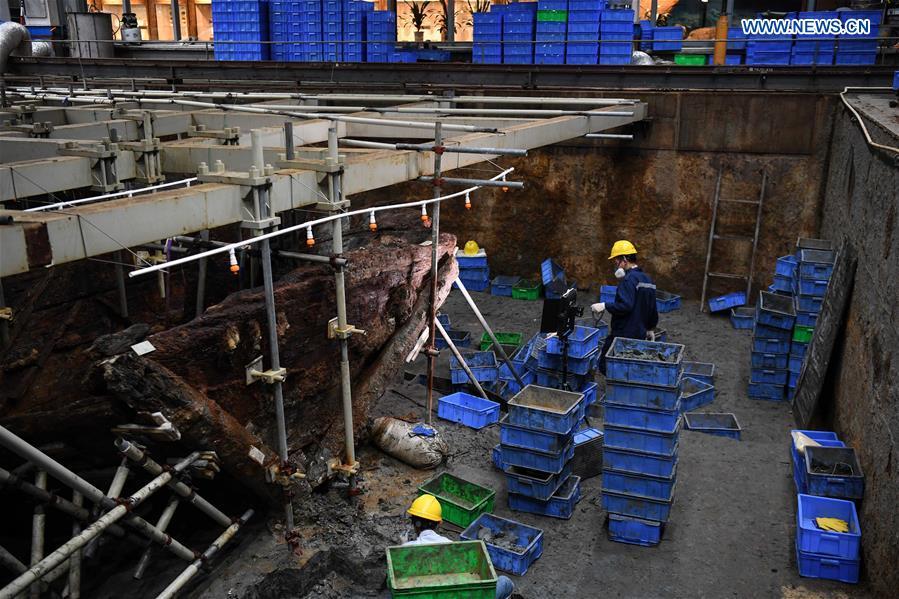
Staff work at the excavation site of the shipwreck of Nanhai No. 1 in Yangjiang, south China's Guangdong Province, May 12, 2020. The excavation of the Nanhai No. 1, a shipwreck dating back to the Song Dynasty (960 A.D.-1279 A.D.), has entered the final stage and is expected to conclude in 2021, according to the excavation team. The excavation the ancient shipwreck was listed by China in its top 10 archaeological discoveries for 2019. (Xinhua/Deng Hua)










